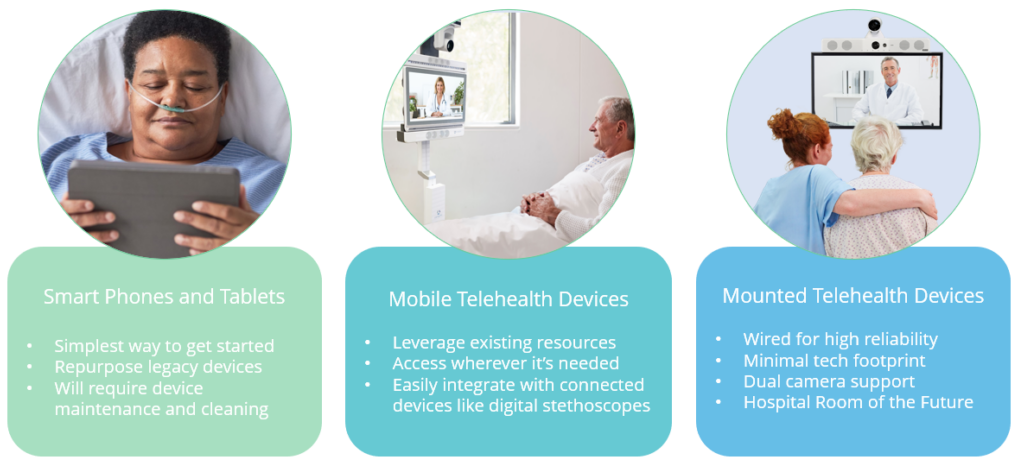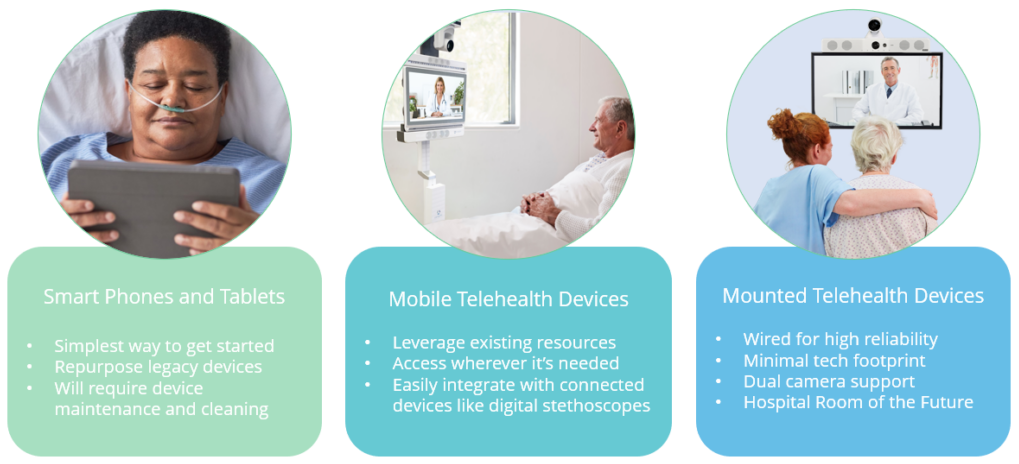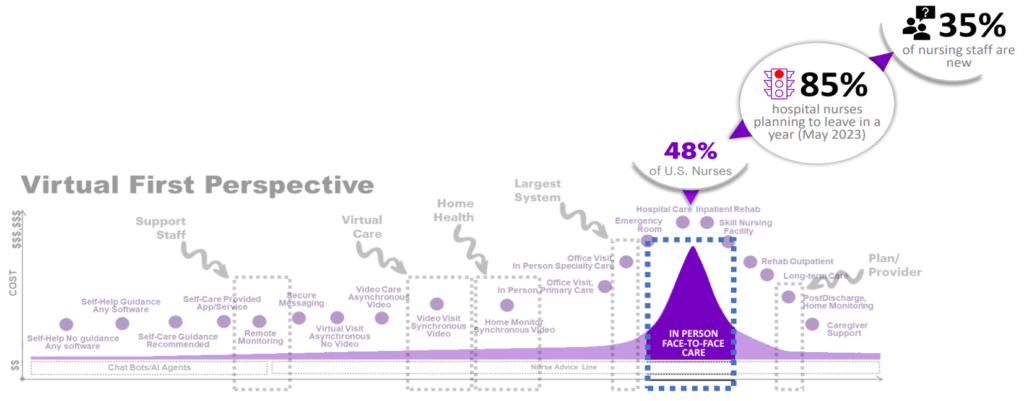Creating a Successful Virtual Nursing Implementation Project Plan: A Step-by-Step Guide

Table of Contents
Virtual nursing implementation project plan is the key to transforming healthcare delivery and ensuring smooth virtual care services. If your organization is looking to adopt virtual nursing, it’s important to have a well-organized plan in place. A solid project plan helps you manage the complexities of virtual nursing, from technology setup to staff training, ensuring success at every stage.
To get started with your virtual nursing implementation project plan, it’s crucial to first understand your organization’s goals. What are the specific challenges you’re trying to solve with virtual nursing? Are you looking to improve patient care, reduce nurse burnout, or enhance overall efficiency? Once you clearly define your goals, your project plan will serve as a roadmap, guiding your team toward successful implementation.
Understanding the Key Steps in a Virtual Nursing Implementation Project Plan
The first step in creating your virtual nursing implementation project plan is understanding the key stages. These stages guide you from planning to implementation and ensure every detail is covered. A successful virtual nursing program requires a comprehensive approach, where each step builds on the previous one to create a smooth transition.
The key steps include:
- Assessing Needs: Understand the specific needs of your patients and healthcare providers.
- Setting Goals: Define what you aim to achieve with virtual nursing, such as improving patient access or reducing hospital readmissions.
- Choosing Technology: Select the right tools and platforms for virtual nursing.
- Team Formation: Assign roles and responsibilities to team members. Each of these steps plays a critical role in ensuring that virtual nursing is successfully integrated into your healthcare system.
How to Assess Your Organization’s Readiness for Virtual Nursing

Before implementing a virtual nursing implementation project plan, it’s crucial to assess your organization’s readiness. This means understanding if your current infrastructure, staff, and resources can support the transition to virtual nursing. Without proper assessment, your plan might fail, and virtual nursing may not be as effective as hoped.
Start by evaluating:
- Technology Infrastructure: Does your organization have the necessary hardware, software, and internet connectivity to support virtual nursing?
- Staff Training: Are your nurses and healthcare providers ready to use virtual tools effectively?
- Patient Needs: Are your patients open to receiving care through virtual nursing methods? Assessing these areas will give you a clearer picture of where improvements are needed and how to best move forward.
Building a Strong Team for Your Virtual Nursing Implementation Project Plan
A successful virtual nursing implementation project plan relies on a strong team. The people leading the project must have the right skills and experience. It’s important to form a team that understands both healthcare and technology, as they will play key roles in implementing virtual nursing effectively.
Key roles in your team might include:
- Project Manager: Leads the project, making sure everything runs smoothly.
- Nursing Leaders: Experienced nurses who can provide insights and ensure the program meets healthcare standards.
- IT Experts: Tech professionals who will handle the technological side of virtual nursing.
- Change Management Experts: They help staff adjust to new workflows and systems. By selecting a team with these skills, you’ll be in a better position to navigate challenges and ensure a successful virtual nursing program.
How to Measure the Success of Your Virtual Nursing Implementation Project Plan

Once the virtual nursing implementation project plan is in place, it’s important to measure its success. This helps to ensure that the program is meeting its goals and allows for adjustments when necessary. Measuring success involves tracking key metrics that reflect both the quality of patient care and the efficiency of the nursing team.
Key metrics to track include:
- Patient Satisfaction: How satisfied are patients with virtual care?
- Nurse Efficiency: Are nurses able to handle more patients due to virtual services?
- Cost Savings: Has virtual nursing helped reduce costs for the healthcare system?
- Technology Usage: How often are virtual tools being used by nurses and patients? These metrics provide clear insights into how well the virtual nursing program is working and where improvements can be made.
Overcoming Common Challenges in a Virtual Nursing Implementation Project Plan
Implementing a virtual nursing implementation project plan comes with its own set of challenges. It’s normal to face issues during the transition, but being prepared can help overcome them smoothly. Common challenges include technical difficulties, staff resistance, and patient engagement. Identifying these challenges early on allows for solutions to be put in place before they become major problems.
Challenges include:
- Technical Problems: Issues with software, hardware, or connectivity can disrupt virtual nursing.
- Staff Resistance: Nurses may feel hesitant or overwhelmed by new technology.
- Patient Engagement: Some patients may not be comfortable with virtual consultations. Planning for these challenges and having backup solutions ensures that the project stays on track even when obstacles arise.
Real-Life Examples: Successful Virtual Nursing Implementation Project Plans from Leading Health Systems

Looking at virtual nursing implementation project plan examples from leading health systems can provide valuable insights. These real-life case studies highlight the successes and challenges faced by other healthcare organizations. By learning from their experiences, you can refine your own plan and avoid common mistakes.
Here are some key lessons from successful projects:
- Technology Integration: One health system successfully integrated virtual care tools with their existing infrastructure.
- Staff Training: Another system focused heavily on training nurses, ensuring they were comfortable using new tools.
- Patient Feedback: Some systems regularly collected patient feedback to improve the virtual care experience. By reviewing these examples, you can adapt best practices and implement them in your own organization.
Conclusion
A virtual nursing implementation project plan is the foundation for success when introducing virtual care in your healthcare system. It helps organize every step of the process, from assessing your needs to selecting the right technology and training your staff. A clear and detailed plan ensures that your virtual nursing program runs smoothly, leading to better patient care and more efficient workflows for nurses.
By following the right steps and learning from successful examples, you can avoid common mistakes and create a program that benefits both your staff and patients. With careful planning and the right team, your virtual nursing program will be ready to meet today’s healthcare challenges and improve the way care is delivered in the future.
FAQs
Q: What is a Virtual Nursing Implementation Project Plan?
A: A Virtual Nursing Implementation Project Plan is a structured roadmap that guides healthcare organizations in successfully integrating virtual nursing services. It outlines the steps, resources, and strategies needed to implement virtual care.
Q: Why is a Virtual Nursing Implementation Project Plan important?
A: It ensures a smooth transition to virtual care by defining goals, managing resources, and addressing potential challenges, leading to more efficient and effective healthcare delivery.
Q: How do I assess my organization’s readiness for virtual nursing?
A: Assess readiness by reviewing your organization’s technology infrastructure, staff training needs, and patient acceptance. This helps identify gaps and prepare for a successful virtual nursing transition.
Q: What are the key steps in a Virtual Nursing Implementation Project Plan?
A: The key steps include assessing needs, setting clear goals, selecting the right technology, forming a team, and creating a plan for training and implementation.
Q: How can I measure the success of my Virtual Nursing Implementation Project Plan?
A: Success can be measured by tracking patient satisfaction, nurse efficiency, cost savings, and how well the technology is being used in daily operations.
Q: What challenges might I face in implementing a Virtual Nursing Plan?
A: Challenges may include technical issues, resistance from staff, and patient engagement. Proper planning and ongoing support can help overcome these obstacles.




